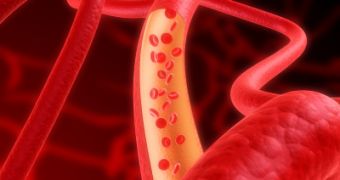British scientists have succeeded to generate stem cells out of endothelial cells in the patient's blood vessels, an achievement that is hoped to have a big contribution in the heart dysfunctions treatment.
The study, led by scientists at the University of Cambridge and published in the journal Stem Cells: Translational Medicine, shows that it is possible to personalize stem cells and convert them into other different types of cells in the body, such as heart or blood vessel cells.
The blood used for the research was grown in a laboratory and the experimental process consisted of separating the “late outgrowth endothelial progenitor cells” from the other particles contained in the blood.
“We have developed a protocol that allows the reliable isolation of L-EPCs from peripheral blood mononuclear cell preparations, including frozen samples,” the author wrote in the study, as cited by Vr-Zone.
“As a proof-of-principle for clinical applications we generated EPC-iPSCs (induced pluripotent stem cells) from both healthy individuals and patients with heritable and idiopathic forms of pulmonary arterial hypertension.”
Scientists say the process is both easier and safer than the other previously known stem-cells generating processes. Moreover, the method assures a long-time preservation of the blood and can be employed on a large scale, which adds to its efficiency and economic advantages.
“This cell type grows very easily, we can keep it long term and at any time point we can convert these cells with high efficiency into stem cells,” explained Dr. Amer Rana, head-leader of the study, as cited by The Telegraph.
The previous techniques used to obtain stem cells were mostly involving skin or a different body tissues and the generating process required biopsy or other complicated surgeries.
“Tissue biopsies are undesirable – particularly for children and the elderly – whereas taking blood samples is routine for all patients,” Dr. Rana said.
“So we wanted to take a methodology, which could really take the stem cell technology … into the clinic in a practical way.”
The discovery is a significant medical achievement, scientists say. There are some safety problems that prevent its usage on humans for now, but research is being led for their rapid solving.

 14 DAY TRIAL //
14 DAY TRIAL //